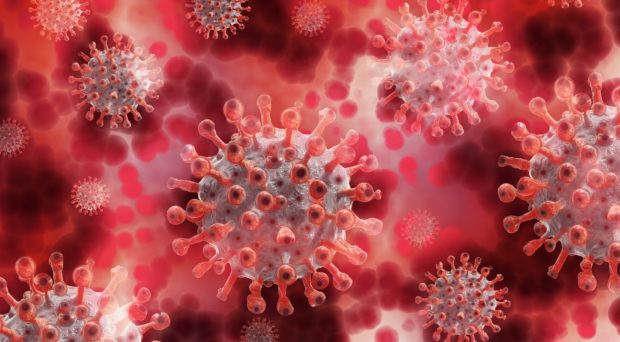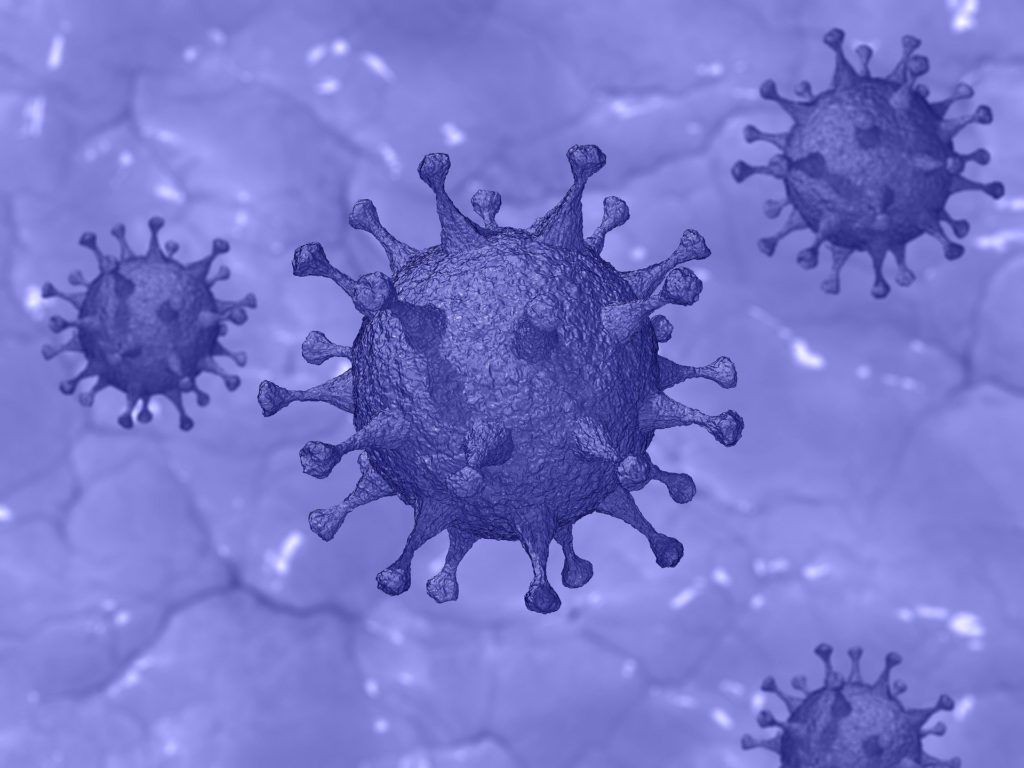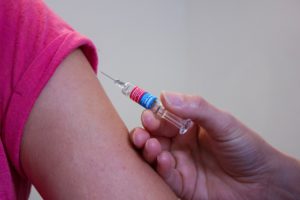
Every century the world will witness a major pandemic. Most active clinicians and researchers alike only have knowledge of the Spanish flu pandemic from medical history. At that time, the exact viral cause of the disease was not known, and neither was there a therapy nor a vaccine. Today, 102 years later, SARS-CoV-2 has infected millions of patients all over the world, with over 400,000 deaths at the time of writing. Pneumonia has interviewed Frank van Kuppeveld and Berend Jan Bosch from Utrecht University, and Manish Sagar at Boston University School of Medicine, to hear their views on the cause and consequences, the present and the future of this new corona virus, SARS-CoV-2.
Now (May 2020) that we know more about the epidemiology of COVID-19, the cellular targets, and the pathophysiology of SARS-CoV-2, how does this strain compare with the other coronavirus that we have had, including the SARS and MERS coronaviruses?
BJB: Currently there are 4 circulating coronaviruses in humans. They cause common colds and (therefore) never received much attention from the medical community.
FK: A typical illustration for this statement is that 2 of the circulating corona viruses, NL63 and HKU1, were only identified after the outbreak of SARS-CoV-1.
BJB: In the veterinary world (pigs, chickens, cows, cats) corona viruses are more serious pathogens, and therefore have been studied more extensively. An older brother of SARS-CoV-2 that emerged in China in 2003 was SARS-CoV, an example of a zoonotic virus which has jumped to humans and subsequently it spread from human to human. MERS-CoV mainly spreads among dromedaries, and occasionally crosses the species barrier to humans. However, the spread of this virus among humans is limited. Case fatality rate of SARS-CoV-1 is 10%; for MERS the reported 35% case-fatality rate is probably over-estimated, because many more people will have been infected. The seroprevalence of MERS antibodies in Saudi Arabia suggests that the virus is more widespread.
Current epidemiological data for SARS-CoV-2 are still relatively scarce but could point towards a case fatality rate of 1%. Another difference between SARS-CoV-1 and SARS-CoV-2 is that the former mainly spreads during the moment of active disease and only the latter can be spread by presymptomatic persons. Nosocomial spread of SARS-CoV-1 has been limited.

FK: SARS-CoV-1 and MERS mainly infect the cells in the lower respiratory tract, whereas SARS-CoV-2 (also) infects the upper respiratory tract. This characteristic contributes to the ease of spreading. SARS-CoV-2’s stronger binding to the ACE-2 receptor (although this is still debated) is another difference. There are additional differences in the structure of the Spike protein.
MS: As mentioned earlier, SARS-CoV-2 shares some similarities and has some significant differences with the other pathogenic coronaviruses such as SARS-CoV-1, MERS, HKU-1, OC43, NL63, and 229E. First, it should be noted that SARS-CoV-2 has achieved a “sweet spot” for a virus. Unlike SARS-CoV-1 and MERS, after establishing infection, it does not immediately make the host sick.
Furthermore, unlike SARS-CoV-1 and MERS, it does not make the infected person deathly ill. The case fatality rate for SARS-CoV-2 is much lower than SARS-CoV-1 and MERS. This is ideal for the virus because it increases transmission efficiency. Unlike the common cold coronaviruses (OC43, NL63, 229E, and HKU-1), it is more lethal and thus has had and will have a major impact on human populations. SARS-CoV-2 uses the ACE2 cellular receptor for cell entry, and SARS-CoV-1 and NL63 also use this receptor. This suggests that cellular entry and presumably tropism is not the primary distinguishing factor among these viruses.
The highly pathogenic coronaviruses (SARS-CoV-1, SARS-CoV-2 and MERS) all appear to initiate an intense and possibly inappropriately delayed innate immune response, which may be directly correlated to the observed morbidity and mortality. The common cold coronaviruses may not induce a similar innate immune response. The mechanistic basis for this discrepancy remains uncertain, but it appears to be a major difference among the highly pathogenic versus more benign human coronaviruses.
FK: Furthermore there are major differences in the demographics of SARS-CoV-1 and SARS-CoV-2 patients. SARS-CoV-1 patients were adults >25 years of age, around 60% women, and without specific preference for the elderly. The reason for this is unknown.

So, what is in your view the most important mechanism that causes the severe pneumonia and the prolonged requirement for ventilatory support?
FK: This is a major and important question, for which the answers are still largely unknown. Indeed, most viral or bacterial pneumonia patients are hospitalized for on average 7 days. As compared to SARS-CoV-1 and influenza, SARS-CoV-2 also causes a severe cytokine storm. It has been suggested that a difference can be found in interferon response: SARS-CoV-1 is a potent inducer of mainly type 1 and 3; SARS-CoV-2 actively replicates in lung cells but hardly induces interferons. Another factor which may play a role is local vascular leakage and angioedema.
MS: I think one of the most enlightening studies for the possible mechanism for severe pneumonia is from investigators at Washington University in St. Louis. In mouse models, they demonstrated that in mice with an early innate immune response (primarily driven by monocytes and macrophages), there is limited lung pathology and morbidity. In contrast, mice that have a delayed innate immune response have high morbidity and lung damage. The lung damage is characterized by infiltration by activated monocytes and macrophages in the lung. Interestingly, this phenomenon appears to be different from other respiratory viruses, such as influenza.
Furthermore, this difference is not driven by a major difference in virus replication. The mechanistic basis for understanding why some infected people have a delayed and robust innate immune response many days after SARS-CoV-2 infection is one of the most interesting and likely useful research avenues. It will provide an important insight about the cause of severe pneumonia.
In mice, attenuating the innate immune response after infection appears to diminish morbidity and mortality. In humans also, use of immune modulators, such as IL-6 receptor and IL-1 receptor blockers, appears to provide benefit. GR: All in all, the (immuno)pathology of COVID-19 may have the characteristics of a Macrophage Activation Syndrome.
BJB: It is disappointing that many of the potential drugs (existing and developed) for which the hopes were high, now in practice show no (such as with hydroxychloroquine) or limited effectivity. Preliminary data indicate that Remdesivir reduces the duration of intensive care treatment from 15 to 11 days, but show little effect on mortality.
Currently at least 70 companies and institutes are working on developing a vaccine. Until the moment that those vaccines will become available, do you see a role for passive vaccination (either with plasma from recovered patients or otherwise) as a form of treatment?
BJB: Like active vaccination, also passive immunization requires all 3 phases of clinical testing before it can be applied. Scaling is a major issue: administration of convalescent serum can turn out to be an effective treatment but certainly not for large groups of patients (read more here and here). Defined monoclonal antibodies against relevant epitopes could be used in selected patients, but not as preventive treatment for large populations.

MS: I don’t see a massive role for passive vaccination. Given the massive number of infected and susceptible people, convalescent plasma as a generalized prophylaxis and treatment is not feasible. At this time, it is difficult to determine which plasma is appropriate for therapy and possibly treatment because there are no standardized measures for assessing neutralization potency. The costs and logistics associated with convalescent plasma make it unfeasible as a solution for the masses. Synthetic single, or a cocktail of, monoclonal antibodies are more feasible although still likely cost-prohibitive.
That said, understanding the impact of monoclonal antibodies and antibodies present in convalescent serum is very important. It will provide unique scientific insights for understanding antibody-based prevention and treatment. It can be used in specific cases, but it is not likely relevant as a mass treatment or prevention strategy.
The circulating coronavirus which cause mild respiratory diseases have been around for centuries. NL63 probably came from bats more then 500 years ago, OC43 may have jumped from cattle to humans in the 19th century. Could you give your thoughts on how SARS-CoV-2 could evolve in the future, to begin with next winter period?
BJB: It cannot be excluded that there is a certain degree of cross-reactivity between antibodies induced by circulating coronaviruses and the current SARS-CoV-2. Whether this would lead to relative protection or to a more serious disease is a question that can not be answered right now. Aminoacid homology of Spike proteins between circulating coronaviruses and SARS-CoV-2 is low. S1, the globular top domain of the Spike protein is highly variable and shows no antigenic cross-reactivity between the various coronaviruses; S2 is the stalk with a more conserved sequence. But even among the conserved S2 regions, thus far no antibodies have been found that bind to both alpha and beta coronaviruses.
MS: SARS-CoV-2 will most probably continue to infect the human population. First, there is a large portion of the human population that remains susceptible. It is estimated based on the R0, that around 66% of the human population would have to prior infection to obtain some form of herd immunity. Among the previously infected patients, I suspect that SARS-CoV-2 will continue to infect people. The SARS-CoV-2 spike will continue undergoing minor modifications that limit the neutralization capacity of pre-existing antibodies. With re-infection, however, I suspect that the disease course will be milder than previous disease. I base these predictions on evolution of influenza within human population.
The circulating coronavirus which now cause common cold like symptoms were much more severe when they first appeared between 200 and 500 years ago. What would the prospects be for SARS-CoV-2? How long would it take before it would obtain the phenotype of a common cold virus.
FK: The target population for severe COVID-19 are the elderly. Two to five centuries ago, that target population was much smaller in size, and first exposure to the virus would have taken place at a younger age. NL63, like SARS-CoV-2 also an ACE2 receptor entering coronavirus, now is a common cold virus. Accessory viral genes which may determine the interaction with the immune system could play a role.

BJB: We have to keep in mind that we are dealing with a novel virus, which made its entry into an immunological naïve population. Virgin soil epidemic is the term coined by Alfred W. Crosby for this situation. Over time this will change, also with development of herd immunity and exposure at an early age, with consequence for the pattern of morbidity and mortality. At the same time, this may impact the behavior of the virus. For 229E coronavirus, mutations hotspots are found in the spike protein domains which are essential for viral entry into the cell.
FK: The only criterion for viral evolution is the degree of spreading, and SARS-CoV-2 has been extremely successful in that respect.
MS: I suspect that SARS-CoV-2 will continue to infect human populations because it has established a strong foothold. As already stated earlier, I think we will have seasonal infections but re-infections in previously infected hosts will lead to a milder clinical syndrome. It is hard to know if SARS-CoV-2 will have similar benign phenotype as the common coronaviruses in the next 50 years or longer.
Prof. Frank van Kuppeveld is Professor of Molecular Virology at the Faculty of Veterinary Medicine of Utrecht University in Utrecht, The Netherlands. His research focuses on the method of replication of RNA viruses in host cells. Specifically, he studies how these viruses are able to “hijack” certain cellular factors and structures in order to replicate their RNA genome. He also researches how these viruses are able to suppress the cells’ antiviral resistance mechanisms. His current research focuses on 1) virus structure, receptors and entry mechanisms, 2) viral genome replication, 3) development of antiviral drugs, and 4) innate host responses and viral countermeasures.
Dr. Berend-Jan Bosch is Associate Professor of Molecular Coronavirology Faculty of Veterinary Medicine, Utrecht University, Utrecht, The Netherlands. He studies coronaviruses: a group of viruses that may occasionally switch host species and can jump from mammals or birds to humans. Bosch is currently researching an antibody that blocks infection by the novel coronavirus SARS-CoV-2 in cells. Bosch is trying to comprehend the interaction between coronaviruses and their hosts, be they animals or humans. How do viruses infect their hosts? How do viruses avoid their hosts’ immune responses? How do viruses jump from animals to humans and cause disease? With a detailed understanding, it will become possible to develop drugs and vaccines.
Dr. Manish Sagar is an Associate Professor of Medicine at the Boston University School of Medicine. His laboratory is interested in human immunodeficiency virus type 1 (HIV-1) in particular to understand the biological mechanisms for the selection observed during HIV-1 transmission.Laboratory studies explore the hypothesis that during transmission there is selection of specific variants with properties that confer fitness for transmission. Another focus in the lab is to decipher correlates of immune protection. Dr. Sagar has served on numerous committees including NIH study sections and Doris Duke Charitable Foundation Early Career Development Award Review Committee. He is an active member of the Infectious Diseases Society of America (IDSA).
Comments